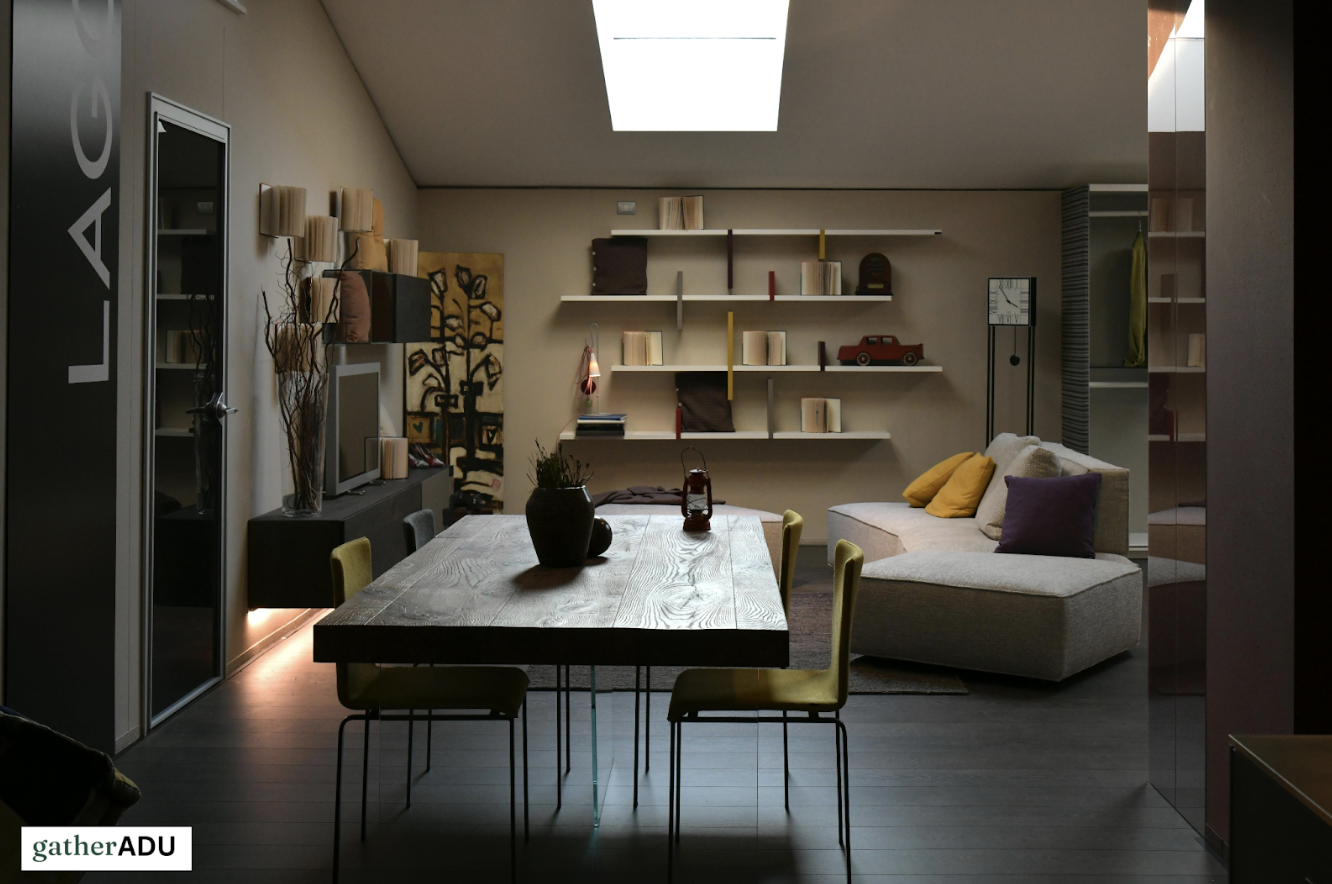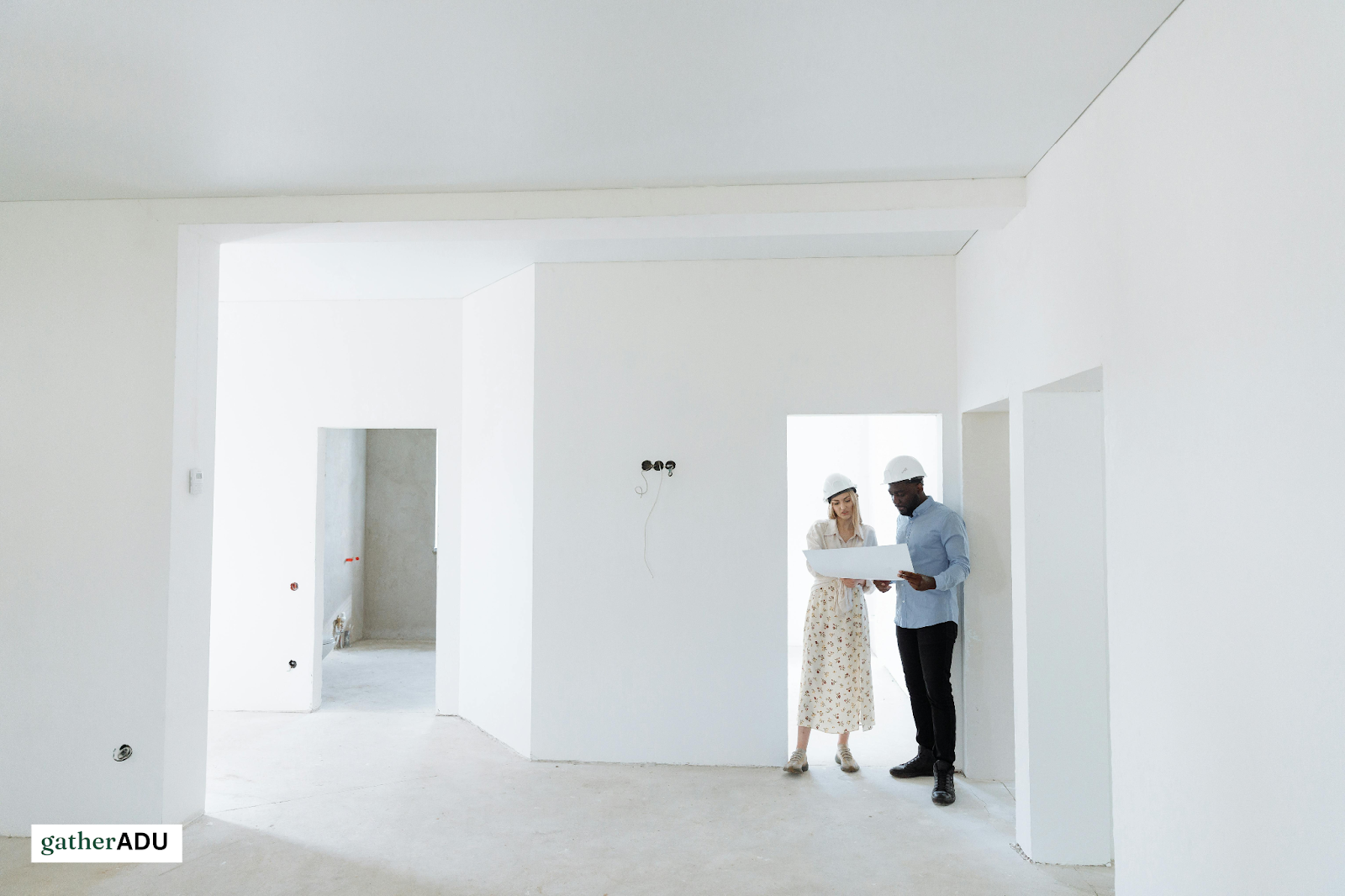ADU Knowledge
October 19, 2025
What Are the Best ADU Home Plans for Atlanta’s Zoning Laws?

.png)
Schedule a free appointment with one of our ADU experts.
Get ADU QuoteOr call: (323) 591-3717
The best ADU home plans for Atlanta’s zoning laws are compact, compliant, and city-approved. Homeowners should focus on plans that fit existing structures like garages or basements, stay within allowed size and height limits, follow setback rules, and use cost-effective, simple designs that streamline permitting and reduce overall expenses.
Moreover, understanding Atlanta’s zoning codes helps you make smarter design choices. When you follow these laws, you avoid costly revisions and approval delays. By partnering with GatherADU, you gain expert guidance to ensure your ADU meets legal standards while providing flexibility, comfort, and long-term value for your lifestyle.
In Atlanta, Accessory Dwelling Units (ADUs) are primarily allowed in the R-4, R-4A, and R-5 zoning districts. ADUs must follow strict regulations, including a maximum size of 750 square feet, a height limit of 20 feet, specific setback requirements, and restrictions on lot coverage and total unit count. ADUs cannot be sold separately from the main home, and detached units require their own independent access.
Key Regulations:
When designing an ADU, using open layouts, multifunctional furniture, and smart storage can make smaller spaces feel larger and more functional. Thoughtful planning ensures compliance with zoning laws while creating a comfortable, efficient living environment that complements the main home.

Setbacks and height restrictions directly affect ADU placement and overall design. In Atlanta, ADUs must typically stay several feet from property lines and remain under 20 to 25 feet in height. These rules ensure privacy, safety, and harmony with surrounding neighborhood structures.
To plan efficiently, consider these essential design adjustments:
Moreover, adhering to these rules encourages efficient design flow and visual balance. You can plan outdoor areas, patios, or green spaces without violating setback boundaries. This careful planning helps maintain privacy while improving functionality and overall curb appeal for your property.

The best ADU layouts in Atlanta use open spaces, minimal hallways, and flexible room arrangements. This approach saves square footage while providing comfort and accessibility. Choosing efficient layouts ensures you stay within legal limits while maintaining the flow and functionality of your living areas.
For better space planning and usability, you can:
Additionally, open layouts improve natural light and ventilation. You can easily connect indoor and outdoor spaces through patios or decks. This design style not only fits zoning constraints but also enhances energy efficiency and livability, making your ADU feel bright, airy, and spacious.

Understanding Atlanta’s ADU zoning laws can be challenging. Many homeowners struggle with setbacks, height limits, and size restrictions, leading to costly delays and confusion. Ensuring your ADU meets all regulations while remaining functional and stylish is a common challenge.
GatherADU offers expert guidance to simplify the process. From compliant designs to efficient permitting, we help you create an ADU that maximizes space, style, and usability. With our support, you can build a legal, comfortable, and beautiful addition to your property without the stress.
Atlanta allows detached, attached, and internal ADUs in most residential zones. Additionally, each type must follow local setback, height, and size regulations. Therefore, always confirm your property’s zoning district before starting construction to ensure your ADU fully complies with city development standards.
Yes, you can rent out your ADU long-term in most Atlanta neighborhoods. However, short-term rentals may face restrictions depending on zoning and location. Thus, it’s essential to review city ordinances carefully and obtain required permits before offering your ADU for rent or lease.
Yes, permits are required for any ADU construction in Atlanta. You must submit detailed design plans, confirm zoning compliance, and meet structural and safety codes. Consequently, once approved, the permit ensures your ADU meets all local building and occupancy standards.
The ADU approval process in Atlanta typically takes between one and three months. However, timelines vary based on project scope, documentation, and zoning reviews. Therefore, submitting accurate, code-compliant plans helps reduce delays and speeds up your overall design and permitting process.
Yes, most zones require at least one parking space for an ADU. However, some neighborhoods near public transit may qualify for reduced or waived requirements. As a result, it’s best to review your zoning code early to confirm your project’s specific parking needs.
.png)
Not sure where to start with your ADU project?